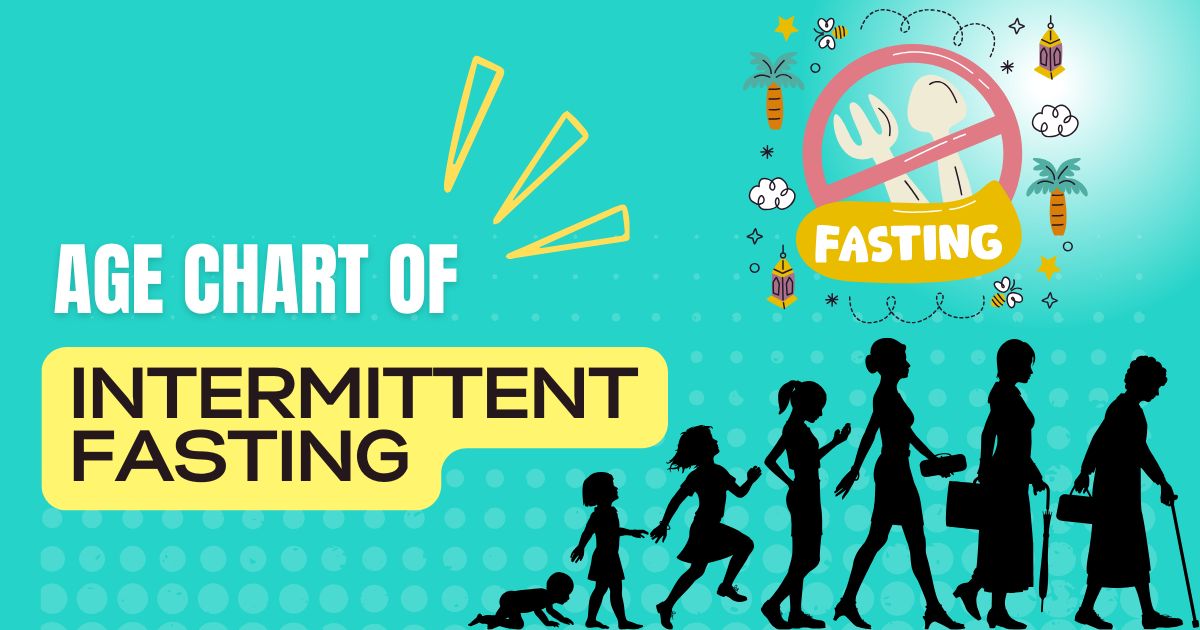Intermittent fasting (IF) has become one of the most popular health and wellness trends worldwide. People adopt it to lose weight, improve metabolism, and promote overall health. However, intermittent fasting is not a one-size-fits-all approach. The ideal fasting window often depends on factors like age, lifestyle, and health condition.
To help you understand better, this guide explores intermittent fasting by age, providing a chart, safe fasting windows, benefits, and precautions for different life stages.
What is Intermittent Fasting?
Intermittent fasting is an eating pattern that cycles between periods of eating and fasting. Unlike diets that focus on what you eat, IF focuses on when you eat.
Popular methods include:
-
16:8 Method – 16 hours of fasting, 8 hours of eating.
-
14:10 Method – 14 hours fasting, 10 hours eating (suitable for beginners).
-
5:2 Diet – Eating normally for 5 days, restricting calories on 2 non-consecutive days.
-
OMAD (One Meal a Day) – Eating all calories in one sitting.
Why Age Matters in Intermittent Fasting
The effectiveness and safety of intermittent fasting vary with age because:
-
Children & teens need constant nutrition for growth.
-
Young adults may benefit from fat-burning and energy regulation.
-
Middle-aged individuals focus on metabolism and weight management.
-
Older adults need to protect muscle mass and energy levels.
Hence, adopting the right fasting schedule by age ensures maximum benefits without health risks.
Intermittent Fasting by Age Chart
Here’s a general guideline on safe intermittent fasting windows based on age groups:
| Age Group | Recommended Fasting Window | Notes |
|---|---|---|
| Under 18 (Children & Teens) | Not Recommended | Growth requires steady nutrition; fasting may cause deficiencies. |
| 18–25 Years (Young Adults) | 14:10 or 16:8 | Best age to experiment; metabolism is strong, and recovery is quick. |
| 26–35 Years | 16:8 or 18:6 | Supports weight management, energy balance, and fitness goals. |
| 36–45 Years | 14:10 or 16:8 | Helps maintain metabolism, reduce fat accumulation, and prevent lifestyle diseases. |
| 46–55 Years | 14:10 or 12:12 | Safer to start with shorter fasting windows to prevent hormonal imbalances. |
| 56–65 Years | 12:12 | Gentle fasting works best; ensures steady energy and nutrient intake. |
| 65+ Years (Seniors) | Not Strictly Recommended | Only light time-restricted eating under medical supervision. |
Intermittent Fasting for Different Age Groups
Teens (Under 18)
-
Not advised due to high nutritional needs for growth and development.
-
Instead, focus on balanced meals, reduced junk food, and regular physical activity.
Young Adults (18–25 Years)
-
Best-suited age group to try intermittent fasting.
-
16:8 method works well for fat loss and mental clarity.
-
Helps regulate appetite and improves focus during study or work.
Adults (26–35 Years)
-
Great for weight management, fitness, and metabolism support.
-
Fasting windows like 16:8 or 18:6 are effective.
-
Supports better digestion and reduces risk of obesity-related conditions.
Midlife (36–45 Years)
-
Metabolism slows down; fat storage increases.
-
14:10 or 16:8 is sustainable for busy lifestyles.
-
Helps manage blood sugar, cholesterol, and early signs of metabolic disorders.
Intermittent Fasting for 46–55 Years
-
Hormonal changes (especially in women during perimenopause/menopause) make 12:12 or 14:10 safer.
-
Focus on nutrient-rich foods to avoid deficiencies.
-
Helps maintain healthy weight, reduce inflammation, and stabilize energy levels.
Older Adults (56–65 Years)
-
Energy needs decline with age, but nutrient needs remain high.
-
12:12 method (balanced fasting) is best.
-
Protects against diabetes, heart disease, and cognitive decline without stressing the body.
Seniors (65+ Years)
-
Strict fasting may cause weakness, nutrient deficiencies, or muscle loss.
-
Only light time-restricted eating (such as early dinner, 10–12 hours overnight fast) is advisable.
-
Always consult a doctor before trying IF at this age.
Benefits of Intermittent Fasting by Age
-
Young Adults (18–35): Supports fitness, mental focus, and weight control.
-
Middle-Aged (36–55): Reduces belly fat, improves insulin sensitivity, lowers disease risk.
-
Older Adults (56+): Helps with digestion, improves cardiovascular health, supports brain function.
Risks and Precautions
While intermittent fasting has proven benefits, it is not suitable for everyone.
-
Avoid if you are:
-
Under 18 (still growing)
-
Pregnant or breastfeeding
-
Suffering from eating disorders
-
On medications for diabetes or chronic illnesses (unless doctor-approved)
-
-
Possible side effects:
-
Fatigue and weakness in the beginning
-
Irritability or low concentration
-
Nutrient deficiencies if not eating balanced meals
-
Tips for Safe Intermittent Fasting
-
Stay Hydrated – Drink plenty of water, herbal teas, or black coffee during fasting hours.
-
Eat Nutrient-Dense Meals – Include lean protein, whole grains, vegetables, and healthy fats.
-
Break Fast Gently – Start with light meals like fruit, soup, or smoothies.
-
Listen to Your Body – Stop fasting if you feel dizzy, excessively weak, or unwell.
-
Combine with Exercise – Moderate workouts enhance benefits but avoid overexertion while fasting.
Final Thoughts
The intermittent fasting by age chart highlights that fasting is not universally suitable for everyone. While it works well for young and middle-aged adults, children, teens, and seniors should avoid strict fasting without medical advice. The safest approach is to choose a fasting schedule that matches your age, lifestyle, and health needs.
When practiced responsibly, intermittent fasting can promote weight management, improve metabolic health, and enhance longevity — but only if it is tailored appropriately.
Also Read :Difference Between Macro and Micro Nutrients: A Complete Guide
FAQs
1. Can teenagers do intermittent fasting?
No, intermittent fasting is not recommended for teenagers as they need constant nutrients for growth and development.
2. Which fasting method is best for people in their 20s?
The 16:8 method is most effective for people in their 20s, as it supports fat loss and energy regulation without being too restrictive.
3. Is intermittent fasting safe for women over 50?
Yes, but a gentler schedule like 12:12 or 14:10 is safer to prevent hormonal imbalances and nutrient deficiencies.
4. Can seniors over 65 do intermittent fasting?
Strict fasting is not recommended for seniors. A mild 10–12 hour overnight fast under medical supervision may be safe.
5. Does intermittent fasting slow down metabolism with age?
No, when done correctly, intermittent fasting can actually boost metabolism and support healthy aging.



